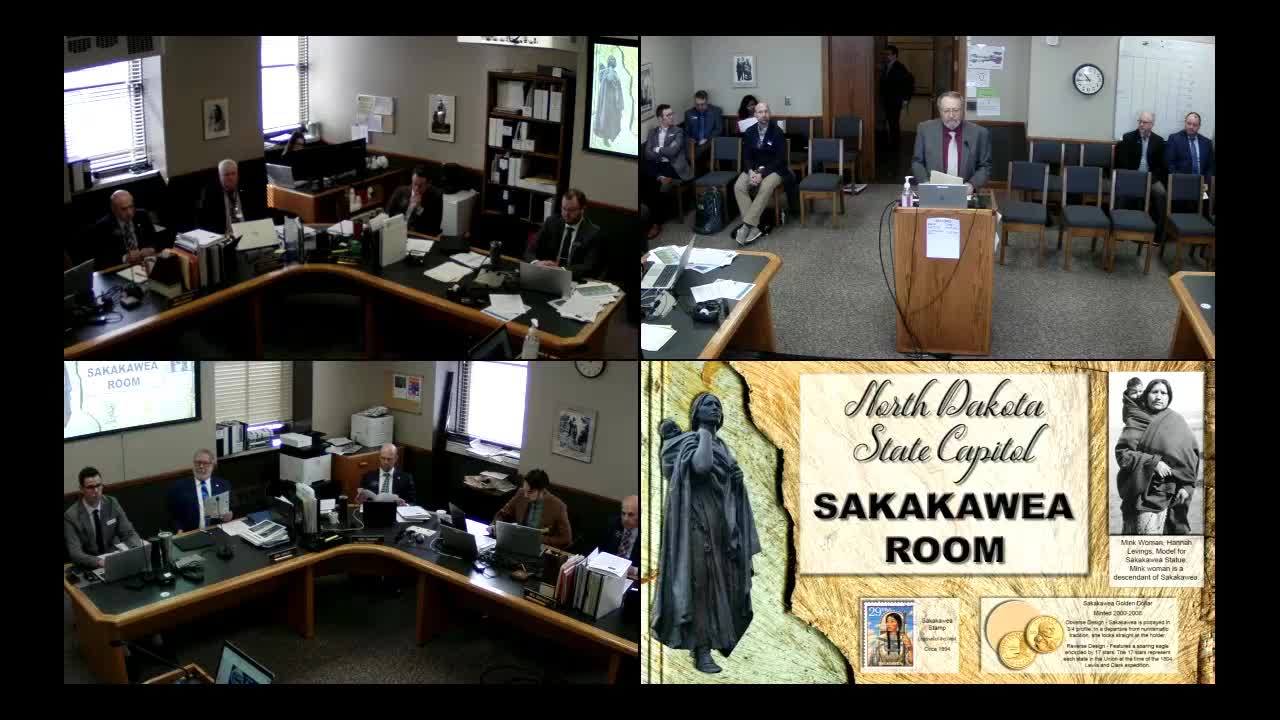North Dakota League of Cities highlights urgent water infrastructure needs and funding challenges
March 11, 2025 | Appropriations - Education and Environment Division, Senate, Legislative, North Dakota
This article was created by AI summarizing key points discussed. AI makes mistakes, so for full details and context, please refer to the video of the full meeting. Please report any errors so we can fix them. Report an error »

In a recent meeting of the North Dakota Senate Appropriations - Education and Environment Division, key discussions centered around the pressing needs for water infrastructure and management across the state. The meeting, held on March 11, 2025, highlighted the critical role of water systems in both urban and rural communities, emphasizing the importance of funding and support for various water projects.
Matt Gardner, executive director of the North Dakota League of Cities, presented alarming statistics regarding the state’s water infrastructure. He noted that 86 cities operate their own water systems, while 269 are connected to regional systems, illustrating the diverse needs of North Dakota's municipalities. Gardner pointed out that the aging infrastructure poses significant challenges, with a projected need of $1.6 billion for water line improvements over the next decade. This figure rises to $2.6 billion over 20 years, indicating a substantial investment required to maintain and upgrade water services.
The discussion also touched on the issue of lead service line replacements, with an estimated 22,000 connections statewide. Gardner expressed concerns about the federal Environmental Protection Agency's (EPA) requirements for replacing these lines, which could strain local budgets and resources. The uncertainty surrounding these regulations adds to the complexity of managing water systems effectively.
Additionally, the meeting addressed the rising costs of water projects due to inflation and the ongoing challenge of finding qualified water operators, particularly in rural areas. Gardner noted that many municipalities struggle to recruit and retain skilled workers, which could hinder the implementation of necessary upgrades and maintenance.
The committee members acknowledged the importance of these discussions, recognizing that water management is not just a technical issue but a vital component of public health and community well-being. As the meeting concluded, there was a clear consensus on the need for continued support and funding for water infrastructure projects to ensure safe and reliable water access for all North Dakotans.
Looking ahead, the committee plans to further explore funding mechanisms and strategies to address the identified challenges, emphasizing the urgency of action in light of the state's growing water needs. The discussions from this meeting will likely shape future legislative priorities as North Dakota navigates its water management challenges.
Matt Gardner, executive director of the North Dakota League of Cities, presented alarming statistics regarding the state’s water infrastructure. He noted that 86 cities operate their own water systems, while 269 are connected to regional systems, illustrating the diverse needs of North Dakota's municipalities. Gardner pointed out that the aging infrastructure poses significant challenges, with a projected need of $1.6 billion for water line improvements over the next decade. This figure rises to $2.6 billion over 20 years, indicating a substantial investment required to maintain and upgrade water services.
The discussion also touched on the issue of lead service line replacements, with an estimated 22,000 connections statewide. Gardner expressed concerns about the federal Environmental Protection Agency's (EPA) requirements for replacing these lines, which could strain local budgets and resources. The uncertainty surrounding these regulations adds to the complexity of managing water systems effectively.
Additionally, the meeting addressed the rising costs of water projects due to inflation and the ongoing challenge of finding qualified water operators, particularly in rural areas. Gardner noted that many municipalities struggle to recruit and retain skilled workers, which could hinder the implementation of necessary upgrades and maintenance.
The committee members acknowledged the importance of these discussions, recognizing that water management is not just a technical issue but a vital component of public health and community well-being. As the meeting concluded, there was a clear consensus on the need for continued support and funding for water infrastructure projects to ensure safe and reliable water access for all North Dakotans.
Looking ahead, the committee plans to further explore funding mechanisms and strategies to address the identified challenges, emphasizing the urgency of action in light of the state's growing water needs. The discussions from this meeting will likely shape future legislative priorities as North Dakota navigates its water management challenges.
View full meeting
This article is based on a recent meeting—watch the full video and explore the complete transcript for deeper insights into the discussion.
View full meeting
